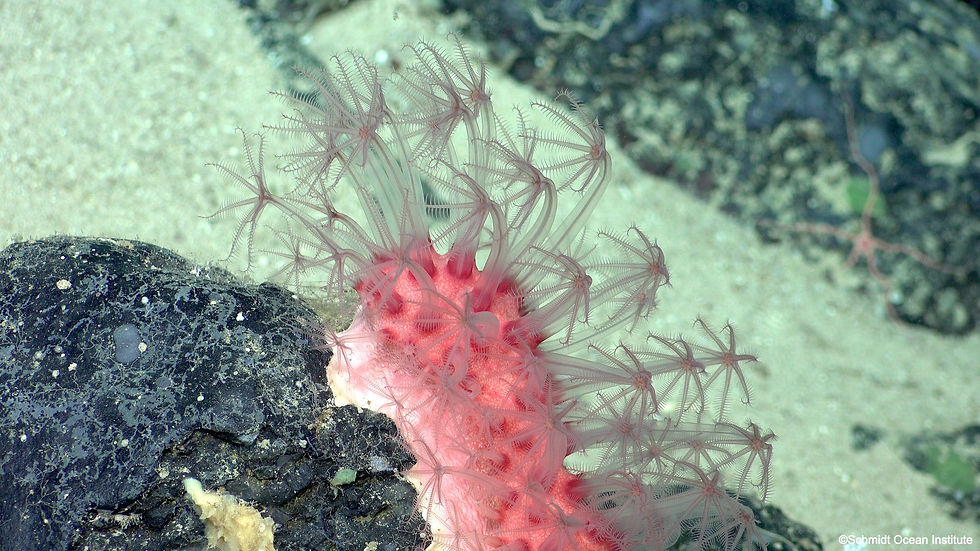Polyp Appreciation Post
- Nicole Pittoors
- Apr 14, 2024
- 2 min read
Updated: Dec 9, 2024
Coral reefs are some of the most diverse and mesmerizing ecosystems on our planet. These vibrant underwater cities are home to countless species, and at the heart of their existence are their polyps. While we often associate corals with shallow, sun-drenched waters, there is another hidden world beneath the ocean's surface where deep-sea corals thrive. Let's dive into the differences between these two groups of corals.
All photos are produced and copyrighted by Schmidt Ocean Institute and were taken during the Health Diagnostics of Deep-Sea Coral cruise that occurred April-May 2023. Please also check out this incredible cruise log written by Biajani Gonzalez that further discusses the wonder and importance of these ecosystems.
Shallow-Water Corals

Shallow-water corals are the ones we typically think of when picturing a coral reef. They are found in warm tropical waters, basking in the sunlight near the ocean's surface. These corals form large, diverse colonies that create spectacular structures, attracting an array of marine life.
Shallow-water coral polyps build reefs using a calcium carbonate skeleton, which provides support and protection. The accumulated skeletons of generations of polyps create intricate formations like branching and table-like structures.
These corals also have a mutualistic partnership with tiny algae called zooxanthellae. The polys offer shelter and nutrients, while the algae provide energy for the coral through photosynthesis.

Brain coral

Montastrea cavernosa

Obricella franskii

Agaricia undata

Gorgonia ventalina (sea fan)
Deep-Sea Corals

Far from sunlight and warmth, another group of corals resides. These corals are found in colder waters, often near underwater canyons and seamounts. Deep-sea coral reefs may look different than their shallow-water counterparts, however, they also provide critical habitats for a variety of deep-sea organisms. They offer shelter, breeding sites, and food sources for many species, including fish, crustaceans, and other invertebrates. They also grow at a much slower pace, with some species living for hundreds or even thousands of years.
Deep-sea coral polyps have adapted to survive in these extreme conditions. They lack the symbiotic relationship with algae and don't rely on sunlight for energy. Instead, they tend to form arborous structures with polyps that reach into passing-by currents in order to capture plankton and organic matter.


Bamboo coral

Paragorgia sp.

Distichopathes

Swiftia exserta

Eunicea

Antillogorgia bipinnata

Bamboo coral

Madrepora

(from left to right) Madrepora, Stlyastrid, Hemicorallium

Stylasterid

Elisella

Pennatula

Chrysogorgia

Iridogorgia Here you can see it feeding as the coral inserts one of its tentacles that captured food into its mouth.

Umbellula

Isidella I4

Anthomastinae

Isidella

Paramuricea

Chrysogorgia

Metallogorgia

Paramuricea

Chrysogorgia
Both shallow-water and deep-sea corals are essential to our planet's biodiversity. They serve as indicators of ocean health, as well as offer invaluable ecological services. However, they face numerous threats including climate change, pollution, and destructive fishing and oil extraction practices. We need to understand and protect these incredible organisms to ensure the survival and well-being of our oceans.



Comments